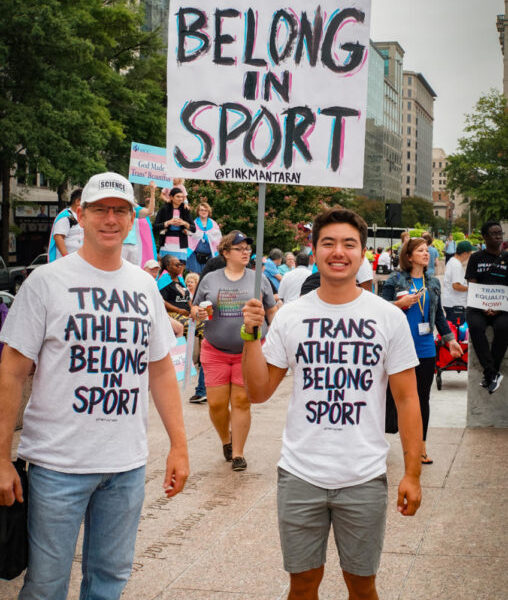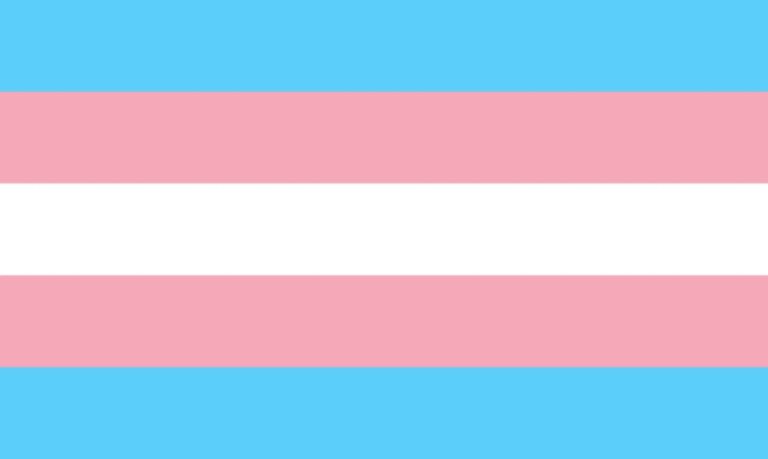A transgender person is someone whose assigned sex at birth does not correspond with their own personal sense of their gender identity. They exist outside the socially constructed ‘gender binary.’
The rights of transgender people are often jeopardized by hate and discrimination. Their rights are often challenged in the courts and in access to healthcare, housing, jobs, etc. In addition, hate against the transgender community has led to an epidemic of murders of transgender people and a disproportionately high rate of suicide.
Every year in the second week of November, people and organizations across the US observe Transgender Awareness Week leading up to the Transgender Day of Remembrance on November 20. Although this week of action, advocacy, and remembrance has helped to bring transgender rights to the forefront of conversations, much progress remains.
Anti-Transgender Violence
According to a 2021 Gallup poll, people who identify as LGBTQ+ comprise under 6% of the U.S. population. However, the FBI documented in 2018 that nearly 20% of hate crimes are directed against individuals because of their sexual orientation or gender identity. This proportion of crimes against this population continues to rise, making a small minority of people highly vulnerable to violent attacks.
The United States is facing an epidemic of fatal transgender hate attacks. Tens of transgender people are killed every year due to their gender identity. In 2019, an estimated 26 transgender or gender non-conforming people were murdered. In 2020, over 40 were killed.
These numbers are likely under-reported. Many people may not be recorded as transgender at their deaths, or their deaths may simply go unreported. The issue also disproportionately affects black transgender women, who constituted the majority of the deaths in 2019.
Legislative Discrimination
In addition to physical violence, transgender Americans have also come under attack by anti-trans legislation and court decisions.
The LGBTQ ‘Panic Defense’
The LGBTQ ‘panic defense’ is also known as the gay and trans panic defense. It is a legal strategy that uses a victim’s sexual orientation or gender identity to explain and excuse their attacker’s violent actions.
The defense has been used in high-profile cases against gay and transgender individuals, but it also applies to genderfluid, genderqueer, bisexual, and other gender- or sexually non-conforming individuals.
This defense is widely disapproved of by lawyers and by much of the public. However, it is still used today to mitigate or reduce charges of murder and other assaults.
As of August 2021, the LGBTQ+ panic defense is only banned in 15 states and D.C. Read about efforts to ban the defense here.
Transgender Athletes
In 2020 and 2021, U.S. state legislatures had a wave of bills prohibiting transgender athletes, primarily trans women, from competing in sports consistent with their gender identity.
Idaho became the first state to prohibit female transgender athletes from competing in women’s sports in 2020, with the Fairness in Women’s Sports Act. It inspired a wave of similar bills.
The bill allowed anyone to file a claim questioning the sex of an athlete, a process that could lead to invasive sex testing. This might include genital exams, genetic testing, and hormone testing.
 The law implies that transgender women are not “real” women who deserve equal opportunities with other women. It is a form of sex-based discrimination.
The law implies that transgender women are not “real” women who deserve equal opportunities with other women. It is a form of sex-based discrimination.
Those who advocate for banning transgender women in women’s sports argue that male bodies have an automatic and unfair advantage in sports, which would help transgender women. Some say men may pretend to be transgender for the sole purpose of competing against women, as opposed to competing against men. These assumptions are not documented.
Sound medical science shows that transgender women have no major advantage over other women in sports. Many are required to undergo testosterone suppression treatments, which suppress the male hormone that produces physical sex differences. Additionally, there is no evidence that men pretend to be transgender to gain a competitive advantage.
Anti-trans sports legislation is not founded on scientific facts but on bias and prejudice.
Language Use and Misgendering
Misgendering means using incorrect pronouns when referring to someone’s gender identity. Sometimes, it happens by accident. People can slip up or unknowingly misidentify someone. Other times, it is intentional and derogatory. For example, people may purposefully identify a transgender woman as ‘Mr.’ or ‘him’ in order to undermine their gender identity and make the person feel uncomfortable.
It is important to respect the pronouns that others choose to share. It is also helpful when introducing yourself to share your gender pronouns so that others do not accidentally misgender you. For example:
My name is _____, and I use _____ (she/her, they/them, he/him, she/they, etc.)___ pronouns.
There are a lot of ways that people in the LGBTQ+ community describe their identities. Understanding this language is important to create safe and respectful discussions. Using the proper terms and labels encourages respect and understanding.
Sex – The classification of a person as male, female, or intersex that is assigned at birth. Usually, sex is based on the appearance of external anatomy. However, sex constitutes a variety of body characteristics such as chromosomes, hormones, anatomy, etc.
Gender Identity – A person’s own sense of their gender. Many people identify as either a man or a woman. However, some gender identities do not fit into that binary classification. Other gender identities include transgender, agender, bigender, genderfluid, genderqueer, two-spirit, and more.
Gender Expression – A person’s external representation of their gender identity. People may express their gender through names, pronouns, clothing, body characteristics, and behavior. These expressions are often interpreted as masculine or feminine, but assumptions should not be made. Transgender people often align their gender expression to their gender identity.
Transgender – An umbrella term that encompasses people whose gender expression and/or gender identity does not align with the sex they were assigned at birth. Because it is an umbrella term, people under this umbrella may use a variety of terms to identify themselves, not just ‘transgender.’ It is always best to use the term preferred by the person.
Cisgender (cis)– A term for people whose gender identity matches their sex assigned at birth. For example, someone who identifies as a woman and was assigned female at birth is a cisgender woman.
Gender Non-conforming – A term used to describe people whose gender expression exists outside of conventional understandings of gender. However, not all gender non-conforming people are transgender and not all transgender people identify as gender non-conforming.
Non-binary/Genderqueer – A term used by people whose gender identity and/or gender expression is outside the binary categorization of women and men.
N.H. and Rebecca Lucero, Commissioner of the Minnesota Department of Human Rights v. Anoka-Hennepin School District No. 11
In 2020, World Without Genocide submitted an amicus brief regarding N.H. and Rebecca Lucero, Commissioner of the Minnesota Department of Human Rights v. Anoka-Hennepin School District No. 11. In this landmark case, the Minnesota Court of Appeals ruled that Minnesota schools must allow students to use locker rooms which align with their gender identity.
Take action here.




